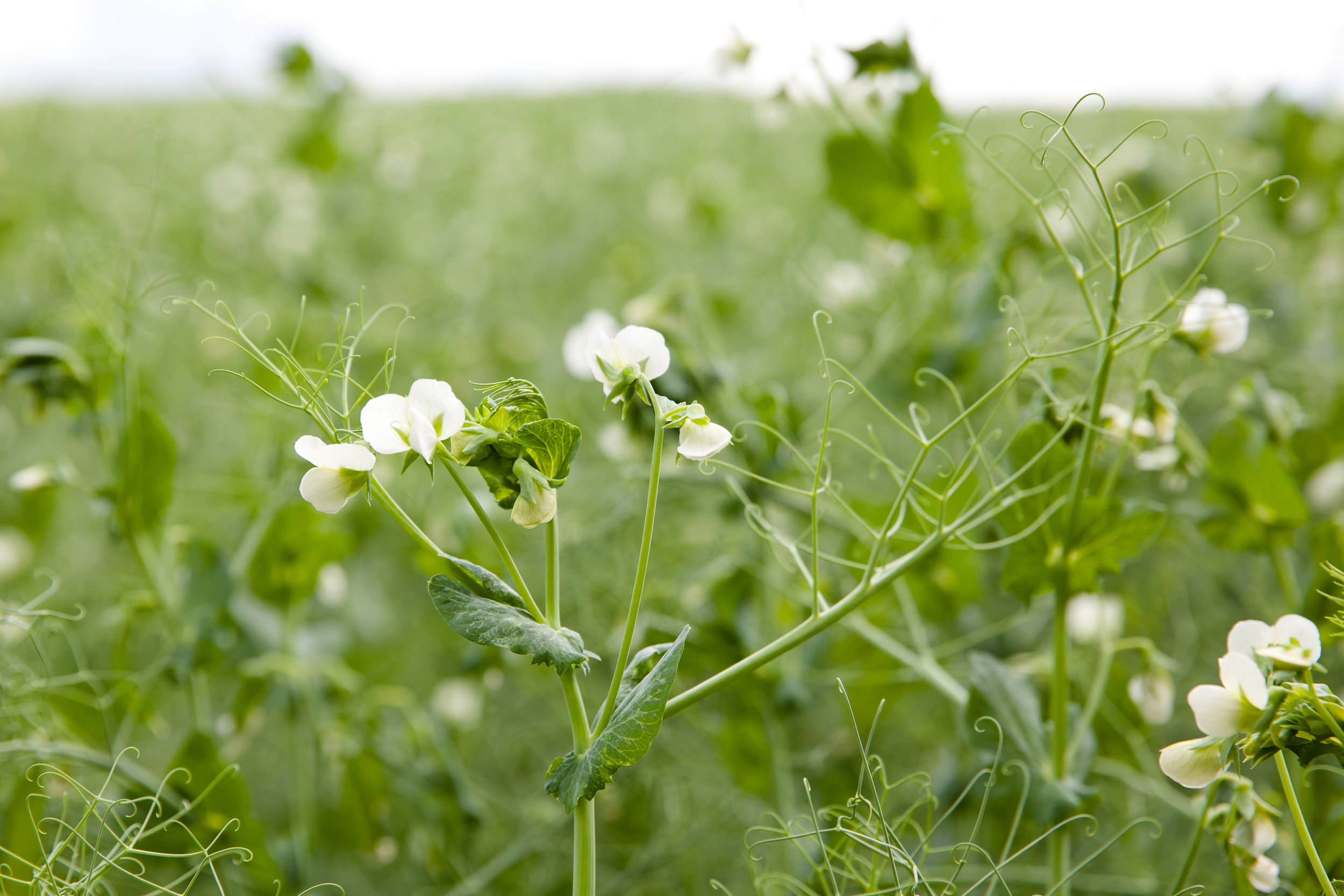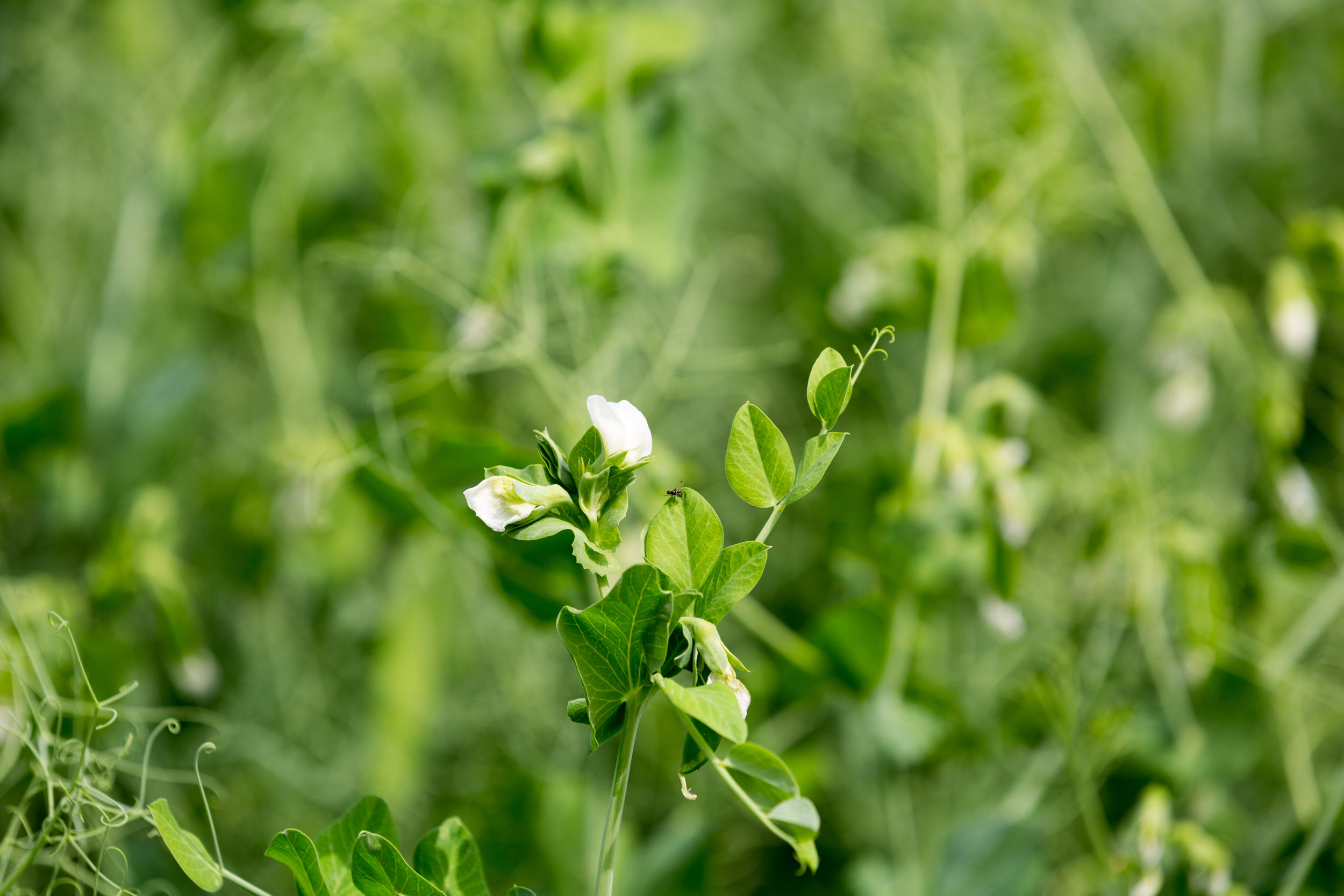Pisum sativum ssp. arvense (FIELD pea)
Other names include Spring pea or Austrian winter pea. Climbing nitrogen-fixing annual legume with white to pink flowers, closely related to the garden pea. Prefers fertile, light-textured, well-drained soils; sensitive to salinity and high acidity. Water efficient and cold tolerant. Rapid and abundant forage producer with low bloat potential. Use for hay, silage, green manure or in wildlife food plots. May be grazed but easily damaged by trampling. Often seeded with cereal crops, especially Oats (Avena sativa), for climbing structure and to improve hay nutrition. May be fall-seeded, but also may be seeded in spring as a summer annual. Early and long blooming period attracts beneficial insects, honeybees and native pollinators. Some varieties are semi-leafless, with vining tendrils that replace leaflets and aid in upright growth and improved harvest.
DISTRIBUTION / ADAPTATION
INFORMATION & ATTRIBUTES
Family: Fabaceae
Duration: Annual
Growth Habit: Forb
Native Status: Introduced
Growth Form:
Mature Height: 24in. - 108in.
Bloom Color: White
Bloom Period:
Annual Precipitation: in.
Drought Tolerance:
Shade Tolerance:
Fire Resistance:
Fire Tolerance:
Nitrogen fixation:
Bloat:
SOIL ADAPTATION
Coarse Texture:
Medium Texture:
Fine Texture:
Salinity Tolerance:
CaCO3 Tolerance:
pH Range:
SEEDING NOTES
Seeds per Pound:
Seeding Rate: lbs/acre
Season:
Days to Germination:
VARIETIES
CDC Horizon - Semileafless forage pea with high biomass yield, powdery mildew resistance and stiff stems to prevent lodging.




